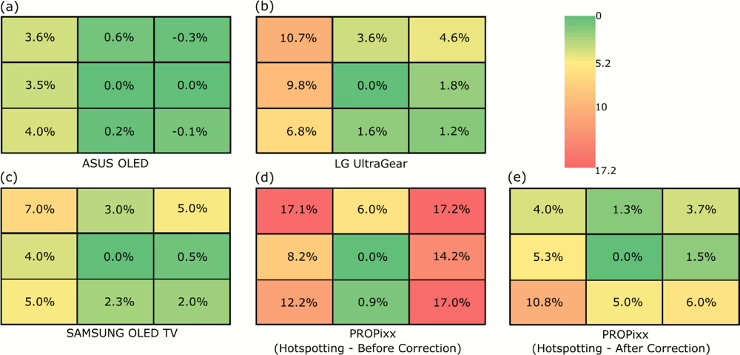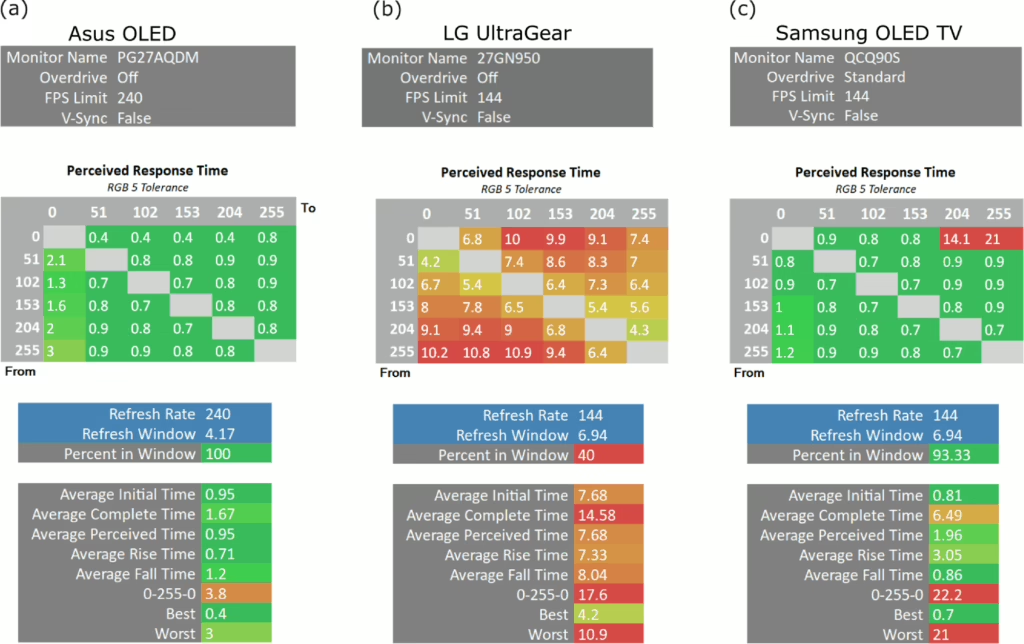New research from the Technical University of Darmstadt suggests that consumer-grade OLED monitors could revolutionize vision science research by offering high-quality display performance at a fraction of the cost of specialized equipment. The study from the university, evaluated four display systems across numerous performance metrics to determine their suitability for scientific applications.
The researchers found that the Asus ROG Swift PG27AQDM OLED gaming monitor, priced at approximately 1/20th the cost of professional scientific displays, demonstrated exceptional performance in several key areas. The monitor achieved an average response time of just 0.95 milliseconds compared to 7.68 milliseconds for the tested LCD monitor. It maintained a sharp square waveform even at its maximum refresh rate of 240 Hz, displayed a color gamut covering 94% of the DCI-P3 color space, and showed the best luminance uniformity with maximum variations of only 4% across the display surface.

The Samsung OLED TV also performed well in most tests with only 7% maximum luminance variation across its surface, though it unexpectedly showed poor pixel response times of up to 21 milliseconds for specific gray-to-gray transitions, despite having an average response time of 1.96 milliseconds.
The professional VPixx PROPixx projector performed well overall but suffered from hotspotting, showing luminance non-uniformity of up to 17.1% before correction and 10.8% after correction procedures were applied.
In gamma value testing, the Samsung OLED TV showed the most consistent results across RGB channels with a maximum deviation of just 0.01 from the target 2.2 gamma value. The Asus OLED showed slightly more variation with the red channel measuring 2.24, green at 2.17, and blue at 2.14.

When testing color additivity, a key feature for scientific accuracy, all four display systems showed excellent performance with the sum of individual RGB channels matching their collective output to within 1% when producing grayscale images.
The researchers concluded that while professional scientific displays remain the gold standard, consumer OLED technology has advanced significantly and now offers a promising alternative for laboratories on limited budgets that still need to conduct rigorous vision science experiments.
Research
Abu Haila, T., Kunst, K., Khanh, T. Q., & Wallis, T. S. A. (2025). Recent consumer OLED monitors can be suitable for vision science. Journal of Vision, 25(2), 11. https://doi.org/10.1167/jov.25.2.11

